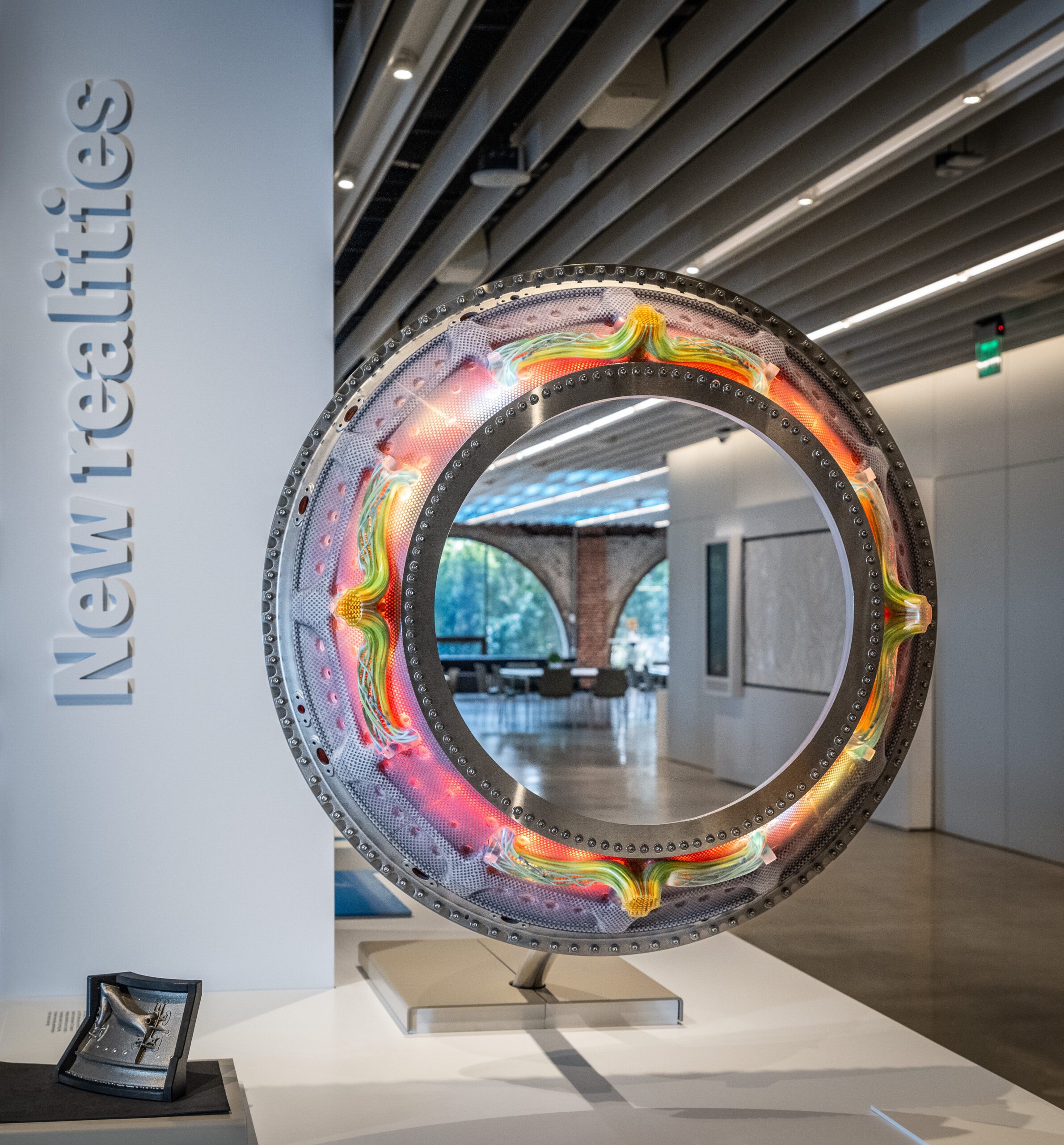Jet Engine Efficiency takes off at the Autodesk Gallery
Highlighting one of the largest achievements in aerospace additive manufacturing
At the Autodesk Gallery, visitors are invited to immerse themselves in the now, next, and future of Design and Make technology. This inspiring space showcases the work of innovators who are shaping the world for future generations, aligning with Autodesk’s mission to create a better world for all.
One of the projects currently featured in the Gallery highlights a research project aimed at designing and making more efficient jet turbines. Clean Sky 2, the European Union’s initiative to minimize aviation’s environmental impact, issued the challenge and GE Aerospace, in collaboration with Autodesk Research and Universities of Technology in Hamburg and Dresden, answered the call. The result was one of the largest achievements in aerospace additive manufacturing, significantly reducing costs, weight, and production time while enhancing performance and functionality.
The team aimed to improve jet engine performance while increasing efficiency, reducing weight, and cutting manufacturing costs. Recognizing the limitations of traditional manufacturing methods, the team leveraged Autodesk’s Fusion industry cloud to explore innovative processes and facilitate collaboration.
The project focused on the turbine center frame (TCF), a pivotal component in turbofan engines that connects the high- and low-pressure turbines, enduring extreme mechanical and thermal stresses. The team refined the design culminating in the double conformal latticing, which significantly enhanced the stiffness-to-weight ratio and thermal resistance.
The large model displayed in the Gallery showcases the intricate latticing design, allowing visitors to experience the engineering breakthroughs firsthand.
“Working on the TCF casing project has been an extraordinary journey where we pushed the boundaries of additive manufacturing using the Fusion Platform,” said Nick Markovic, Research Manager, and a key contributor to the project. “We validated cutting-edge research technologies and threw the kitchen sink at it—from creating the most extensive additive build simulation to designing organic, generative fluid structures.
“Having our work featured in the Autodesk Gallery allows people to witness the engineering beauty and precision firsthand, giving them a tangible sense of what it takes to create one of the largest parts of its kind.”
“Featuring this incredible project in the Autodesk Gallery underscores our commitment to highlighting groundbreaking innovations that push the limits of technology and sustainability,” said Sherri Nevins, Sr. Manager of the Autodesk Gallery, responsible for exhibit curation. “This project exemplifies the kind of forward-thinking and collaboration that we aim to celebrate and share with our visitors.”
The Autodesk Gallery works closely with Autodesk Research to identify and highlight other projects, including the team’s work with Coral Maker, JPL’s interplanetary lander, and the Hyundai Ultimate Mobility Vehicle. Visiting the Autodesk Gallery is by invitation-only for special events or executive briefings. To learn more about our Executive Briefing program, visit our website or contact your Autodesk account representative.
Get in touch
Have we piqued your interest? Get in touch if you’d like to learn more about Autodesk Research, our projects, people, and potential collaboration opportunities
Contact us